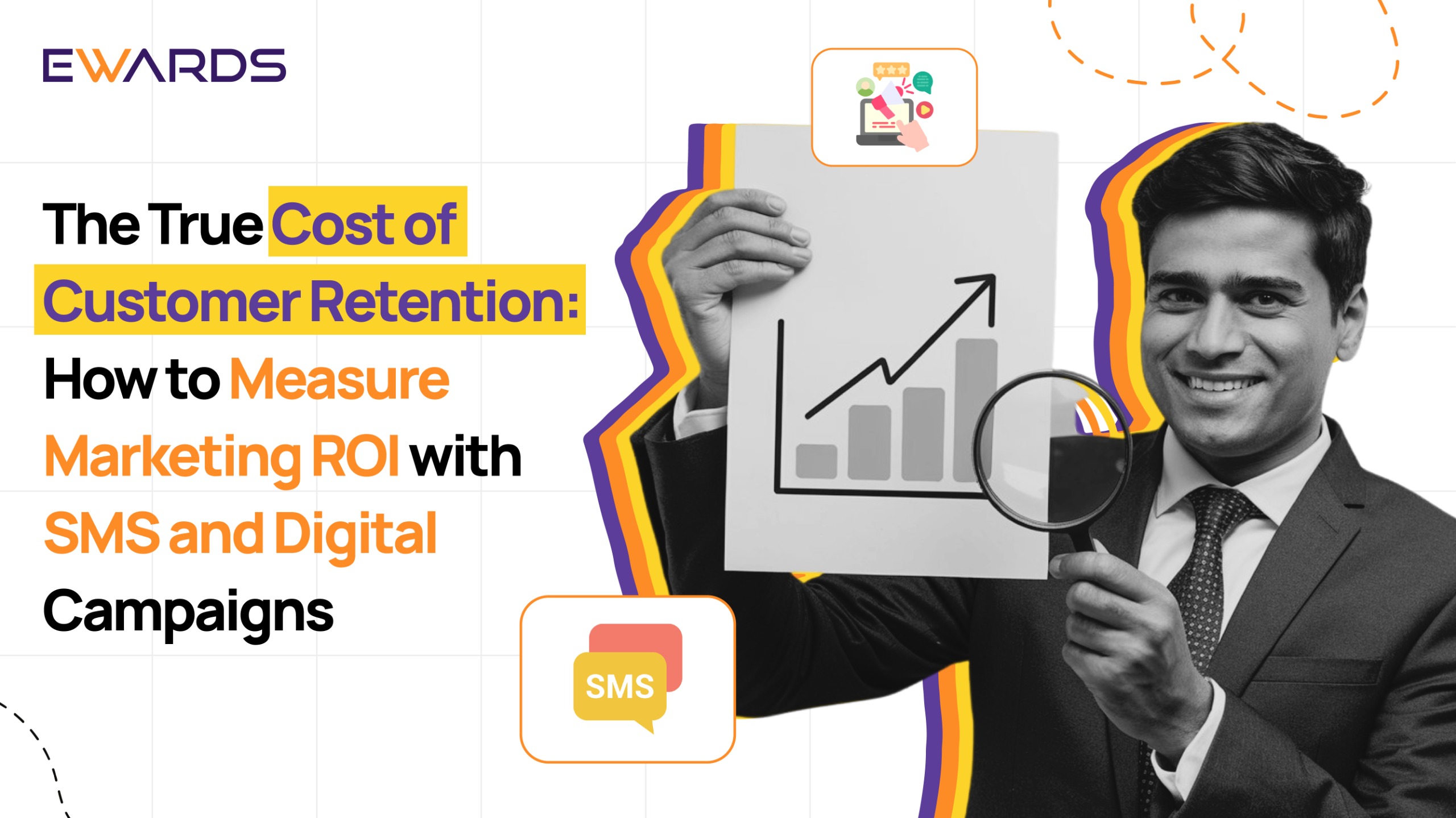
Did you know that retaining a customer is up to seven times more cost-effective than acquiring a new one? Or can a mere 5% increase in retention boost profits by up to 95%? Yet, many businesses continue to prioritize acquisition, overlooking the immense growth potential that lies in customer retention. Retention isn’t just about keeping customers—it’s about turning them into brand advocates, maximizing their lifetime value, and creating a sustainable growth engine. But here’s the challenge: how do you measure the true cost of retaining a customer? Are your SMS and digital campaigns delivering the ROI you expect, or are they simply eating into your margins? Let’s dive into the metrics, strategies, and insights you need to measure and optimize retention effectively.
Why Retention is the Real Growth Strategy?
Research highlights the pivotal role of retention:
- A 5% increase in customer retention can lead to a 25%-95% increase in profits (Bain & Company).
- Acquiring a new customer is 5-7 times more expensive than retaining an existing one (Harvard Business Review).
- 65% of a company’s revenue comes from repeat customers (Invesp).
Why Retention Trumps Acquisition?
Let’s start with a fundamental question: why prioritize retention over acquisition? The answer lies in the numbers:
- Acquisition Costs Are Higher: Acquiring a new customer can cost 5-25x more than retaining an existing one (Harvard Business Review).
- Loyal Customers Spend More: Repeat customers spend 67% more than new ones (BIA/Kelsey).
- Higher Conversion Rates: The probability of selling to an existing customer is 60-70%, compared to 5-20% for a new prospect (Marketing Metrics).
Retention-focused strategies don’t just boost loyalty; they also enhance revenue, reduce churn, and maximize lifetime customer value.
The Cost Breakdown: Acquisition vs. Retention
Customer Acquisition Cost (CAC)
CAC = (All Sales + Marketing Expenses / Number of New Customers Acquired)
Acquisition costs typically include:
- Advertising spend (e.g., social media, search ads).
- Sales team expenses.
- Discounts and promotions.
For example, a ₹5,00,000 marketing campaign that acquires 1,000 new customers results in a CAC of ₹500.
Customer Retention Cost (CRC)
CRC = (Retention Campaign Costs / Number of Retained Customers)
Retention costs include:
- Loyalty programs.
- SMS and email campaigns.
- Personalized offers.
If a ₹1,00,000 retention campaign retains 1,000 customers, the CRC is ₹100.The takeaway? Retention campaigns are more cost-effective and yield higher ROI.
Why SMS and Digital Campaigns Lead the Pack?
1. Unmatched Reach and Engagement
- SMS boasts a 98% open rate, compared to email’s 20% (Mobile Marketing Association).
- 90% of SMS messages are read within 3 minutes, making it the most immediate engagement channel.
2. Cost-Effectiveness
- SMS campaigns cost as little as ₹0.20 per message, with a response rate of 45%, far exceeding email’s 6% (Campaign Monitor).
3. Hyper-Personalization at Scale
Digital campaigns allow for targeted, relevant messaging based on customer data:
- Dynamic SMS: “Hi [Name], earn double points this weekend at [Location].”
- Targeted Ads: Showcasing products based on past purchases or preferences.
By combining SMS and digital campaigns, retailers can create seamless customer journeys that build loyalty and increase retention.
Measuring ROI for SMS and Digital Campaigns
To ensure your campaigns deliver value, focus on these metrics:
1. Customer Lifetime Value (CLV)
CLV = (Average Transaction Value)×(Purchase Frequency)×(Customer Lifespan)
Example: A customer spending ₹5,000 twice a year for 5 years has a CLV of ₹50,000.
2. Return on Investment (ROI)
ROI = ((Revenue Generated – Campaign Cost) / Campaign Cost)×100
Example: If an SMS campaign costing ₹50,000 generates ₹3,00,000 in revenue, the ROI is 500%.
3. Engagement Metrics
- Click-Through Rate (CTR): Measures how many customers click links in SMS or digital messages. The average SMS CTR is 19%.
- Redemption Rate: Tracks how often customers redeem loyalty rewards or offers.
Actionable Strategies for Retail Enterprises
1. Segment Your Audience
Use customer data to identify high-value segments and tailor campaigns to their preferences.
2. Automate Engagement
Leverage automation for personalized SMS and email reminders about expiring points, exclusive previews, or offers.
3. Focus on Behavioral Triggers
Send targeted messages based on customer actions, such as “We miss you! Here’s 20% off your next visit.”
4. Continuously Measure and Refine
Track metrics like CLV and ROI to identify areas for improvement and optimize your strategies.
The Future of Retention: Combining Data with Strategy
Retention isn’t just about reducing churn—it’s about growing customer value. By integrating robust CRM tools with powerful analytics, retailers can craft data-driven retention strategies that deliver measurable results.
Combining the cost-effectiveness of SMS with the precision of digital campaigns allows retailers to deepen relationships, enhance loyalty, and drive long-term profitability.
Conclusion
Customer retention isn’t a cost—it’s an investment. In an environment where customer expectations are higher than ever, businesses that prioritize retention through smart, data-driven strategies will always have the competitive edge.
By understanding the true retention cost and leveraging the power of SMS and digital campaigns, retailers can maximize ROI, build loyalty, and secure sustainable growth.